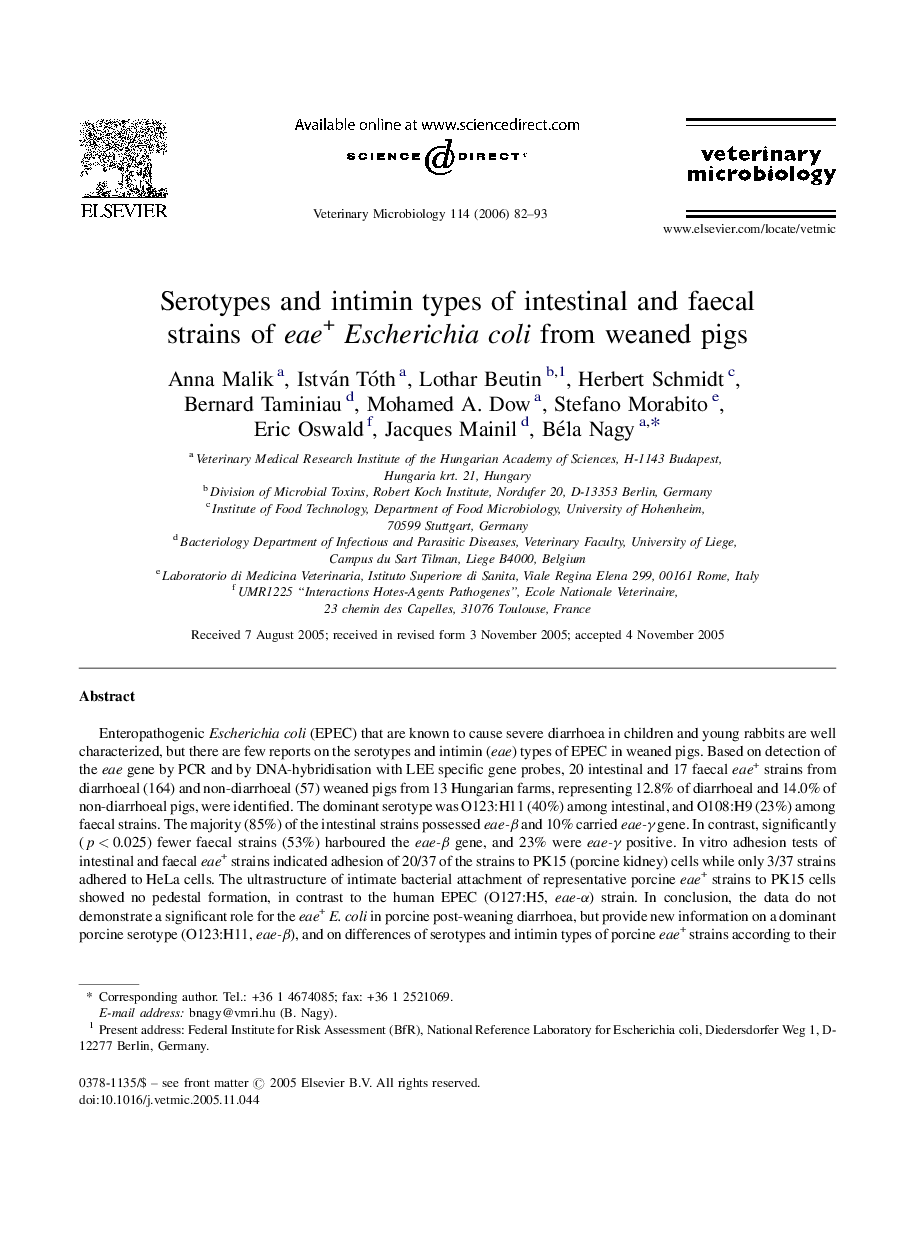| Article ID | Journal | Published Year | Pages | File Type |
|---|---|---|---|---|
| 2469672 | Veterinary Microbiology | 2006 | 12 Pages |
Enteropathogenic Escherichia coli (EPEC) that are known to cause severe diarrhoea in children and young rabbits are well characterized, but there are few reports on the serotypes and intimin (eae) types of EPEC in weaned pigs. Based on detection of the eae gene by PCR and by DNA-hybridisation with LEE specific gene probes, 20 intestinal and 17 faecal eae+ strains from diarrhoeal (164) and non-diarrhoeal (57) weaned pigs from 13 Hungarian farms, representing 12.8% of diarrhoeal and 14.0% of non-diarrhoeal pigs, were identified. The dominant serotype was O123:H11 (40%) among intestinal, and O108:H9 (23%) among faecal strains. The majority (85%) of the intestinal strains possessed eae-β and 10% carried eae-γ gene. In contrast, significantly (p < 0.025) fewer faecal strains (53%) harboured the eae-β gene, and 23% were eae-γ positive. In vitro adhesion tests of intestinal and faecal eae+ strains indicated adhesion of 20/37 of the strains to PK15 (porcine kidney) cells while only 3/37 strains adhered to HeLa cells. The ultrastructure of intimate bacterial attachment of representative porcine eae+ strains to PK15 cells showed no pedestal formation, in contrast to the human EPEC (O127:H5, eae-α) strain. In conclusion, the data do not demonstrate a significant role for the eae+E. coli in porcine post-weaning diarrhoea, but provide new information on a dominant porcine serotype (O123:H11, eae-β), and on differences of serotypes and intimin types of porcine eae+ strains according to their site of isolation. Furthermore there was an indication that the PK15 cell line could be used as a model to study in vitro adherence of eae+E. coli of some human and porcine origin.
